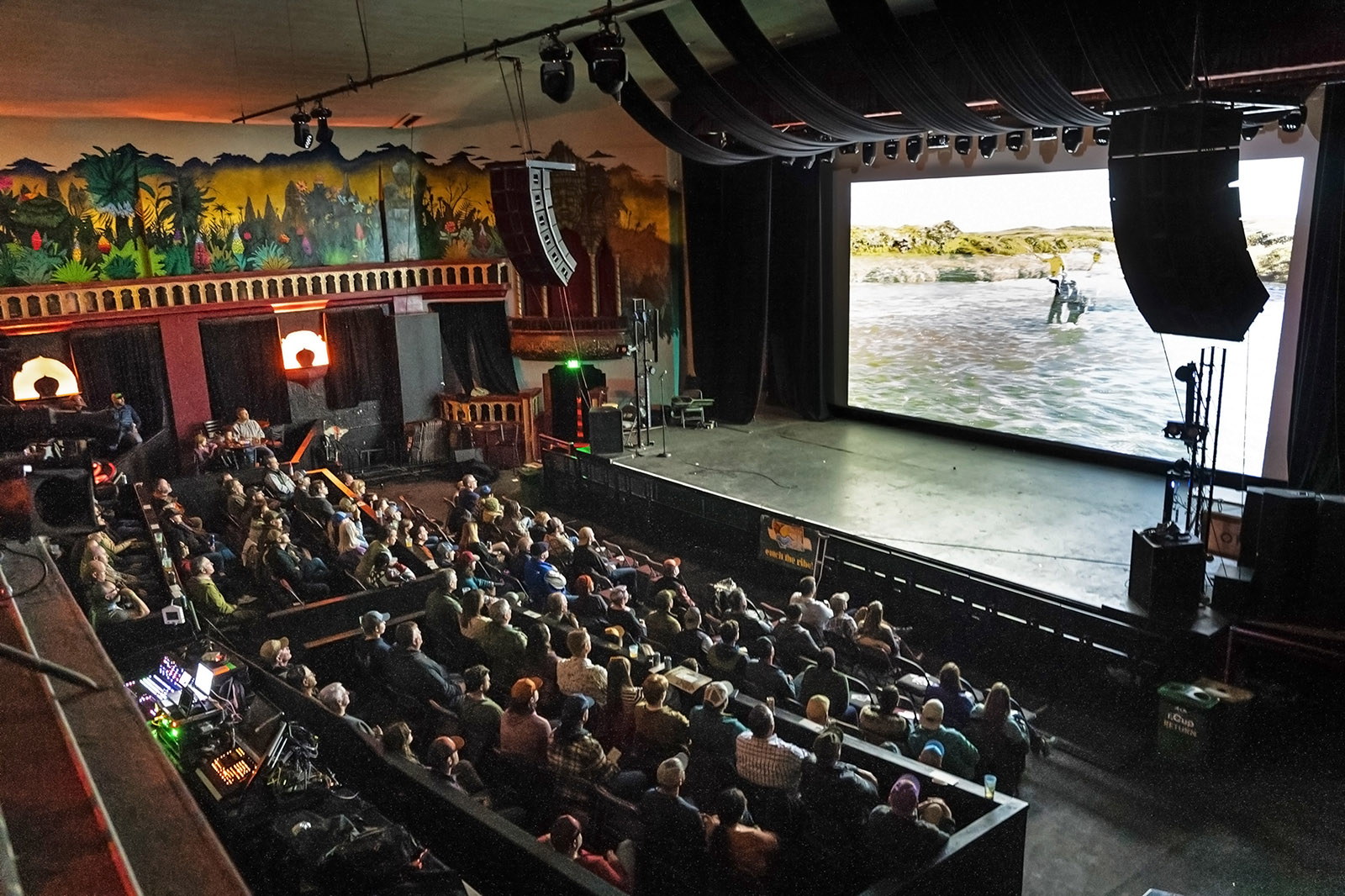Keepin’ It Reel

by Leah Veress
Capturing Montana’s fly fishing scene on film.
As Matthew Devlin wrapped up his fifth season of guiding fishing trips in Missoula, he decided he was ready for a change. It was 2011, and a new stop cropped up on the itinerary for his annual post-season fishing trip: Costco. Gear loaded, buddies packed in—and shiny new camera in hand—Matthew set off on the tour that would change his life.
For a week and a half, Devlin and his ragtag posse of “trout bro, fishing-guide dudes” fished, floated, and filmed their straightforward, accessible approach to the sport. The film’s title mirrored the simplicity of the trip: 10 Days.
“We were really just living the trout-bum lifestyle,” Devlin recalls. “We didn’t have much in the way of money or fancy gear. We actually returned the camera once we finished filming. We were just out there having fun, hoping to make a film that would help people realize you don’t have to have all the latest equipment or an expensive rig to get after it.”
Not wanting Ten Days to get lost in a seemingly infinite pool of YouTube videos, but realizing it lacked the production value of national film tours, the group decided to rent out Missoula’s Crystal Theater—which has since closed—and build a lineup around their film. And thus, the Montana Fishing Film Festival was born.
For a week and a half, Devlin and his ragtag posse of “trout bro, fishing-guide dudes” fished, floated, and filmed their straightforward, accessible approach to the sport.
“We just wanted to scrape away the pretension around fly fishing—it’s not about having the fancy gear or years of experience. Everyone should feel welcome to get out there and throw a line in the water,” Devlin says, adding that he misses the way fishing was 20-something years ago, “before it became cool.”
From 2012 to 2019 the festival cascaded, expanding all across the Northwest and Rocky Mountain regions. At its peak, the festival traveled to eight states with shows in cities like Seattle and Denver.

Then COVID hit—a tale now as common as losing a lunker to weak tippet. “Our whole business model revolved around having large gatherings indoors, so we had to scramble to figure out how the hell we were going to keep this thing afloat.”
Ultimately, the 2020 festival was held outside, at Ogren Park—the old home of the Missoula Ospreys—in the same city where it all started. The event was a success, and the festival persevered through the pandemic. Along the way, they picked up a three-year sponsorship with a big name in the fishing industry, which boosted Devlin’s confidence in the longevity of the festival.
From 2012 to 2019 the festival cascaded, expanding all across the Northwest and Rocky Mountain regions. At its peak, the festival traveled to eight states with shows in cities like Seattle and Denver.
But in 2024, their sponsor backed out prematurely, threatening a long legal battle and uncertain future for the Montana Fishing Film Festival. “It felt really important to punch back,” Devlin explains, because they were just trying to intimidate us with their corporate attorneys and law firm in some seven-story high rise in Cleveland. It really left us at a crossroads. I almost got a ‘real job.’ We almost stopped doing the festival altogether.”
But they won the legal battle, and the Montana Film Office, a department of the Montana Chamber of Commerce, stepped in and infused enough grant money to keep the festival afloat.
Devlin notes that this influx transformed their whole business model, from one that prioritized expanding across the region and pushing ticket sales to one that was uniquely Montanan. In the 2024-25 cycle, the festival’s primary initiative was to bring attention and shows to rural, underserved locations. “We want to highlight small towns that fly under the radar and seem to be a thousand miles away from everything,” he says.
Now, the festival is completely free for all attendees, and events and featured films place heavy emphasis on community-building and increasing accessibility to fishing. Says Devlin: “Our mission at this point is to connect people with the sport of fly fishing, celebrating the future, and trying to make the activity more approachable.”
This past year, Devlin opted for showings in Livingston, Lincoln, Red Lodge, and other small towns across the Big Sky state, excluding Missoula altogether. As the focus of the festival shifts, Devlin says it’s important that people continue to participate, whether that means watching the screenings, partaking in casting workshops, or submitting films. “One of our mottos is ‘catch the vibe,’” he says. “Just come out to see what we’re about, and you’ll be pleasantly surprised.”
“Our mission at this point is to connect people with the sport of fly fishing, celebrating the future, and trying to make the activity more approachable.” — Matthew Devlin
The Montana Fishing Film Festival is currently open for submissions for the 2025-26 cycle, which is slated to launch in early October and run through August 2026. Shows are family-friendly and consist of 7-10 short films, each 5-12 minutes long, with an intermission. Additionally, the day-long events offer free casting and fishing seminars, all with the aim of introducing people to the sport and stripping away the pretension around it.
“We never could’ve hoped the festival would take off as well as it did,” Devlin says. “It’s really evolved to be an organic, sustainable thing—there’s something special about the way people connect to it that keeps it going year after year.”
If you’d like to learn more about the Montana Fishing Film Festival, are interested in submitting a film, or are otherwise looking to support this grassroots movement, visit mtfishingfilmfest.com/take-action or email mtfishingfilmfest@gmail.com.
